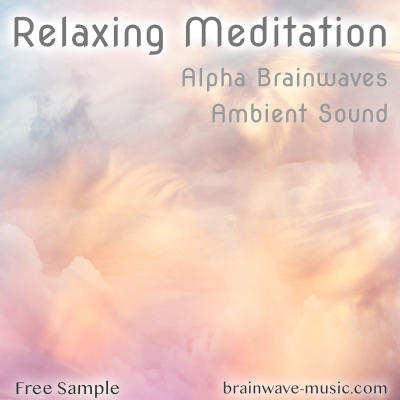Everything You Need to Know about Binaural Beats
The fantastic potential benefits of listening to binaural beats is supported by countless personal testimonies and a myriad of scientific studies from around the world. Binaural beat soundtracks possess the proven ability to improve our physical health, enhance our state of mind, and expand our spiritual well-being and personal development.
While it is easy to just put on a set of headphones and start benefiting from this technology right away, you may have questions and concerns about how and why binaural beats work, whether they are safe, and be wondering how they can assist you in reaching your goals and achieving your real potential.
Read on to learn the details about this astounding phenomena and the technology that makes it possible and discover the answers to these questions, and more.
- What Exactly are Binaural Beats?
- How do Binaural Beats Work?
- Understanding Brainwaves and States of Consciousness
- Proven Benefits of Binaural Beats
- Uses for Binaural Beats (like enhancing meditation, increasing mental focus and learning, pain relief and more)
- How Binaural Beat Soundtracks Can Help You Sleep Better
- Using Binaural Beats for Lucid Dreaming
- Benefits of Binaural Beats for Anxiety, Depression, and Other Psychological Conditions
- Different Types of Brainwave Entrainment
- Are Binaural Beats Safe?
- The Scientific Evidence on Binaural Beats
- Conclusion

What Exactly are Binaural Beats?
A binaural beat is a pulsing sound perceived in the mind when each ear hears a separate tone of two slightly differing frequencies. Binaural beat technology allows the listener to achieve a specific, desired state of mind and a desired mental or physiological effect.
This phenomenon was first discovered in 1839 by a German scientist named Heinrich Wilhelm Dove, although the uses and benefits of Dove’s discovery remained unappreciated until the 1970s.
In 1973, an American psychology researcher named Gerald Oster rekindled Dove’s discovery and took it to the next level. Oster explored the nature and uses of binaural sounds, discovering that when the difference in frequency between the two tones is in the range of human brain waves, the listener’s brain waves synchronize with this frequency in a process known as brain wave entrainment.
Oster published his findings in a paper in the science journal Scientific American, leading to an avalanche of further research and discoveries on the neuroscience of how listening to binaural tones can affect the mind, mood, and behavior of human beings. This research continues to this day.
Binaural Bliss - A deep meditation from alpha to theta mind state
PLEASE LISTEN WITH STEREO HEADPHONES
How do Binaural Beats Work?
Binaural literally means “two ears,” and this refers to the fact that binaural pulses involve separate tones heard by each ear. These separate tones are known as the carrier frequencies or carrier tones.
For the binaural tone to be perceived in the mind, the carrier tones must be of the same amplitude and differ from one another by approximately 40 Hz or less in frequency. Hz is merely an abbreviation for the word hertz, a unit of measurement of electrical vibration measured in oscillations per second.
When you put on a set of headphones and listen to a binaural beat soundtrack, the two separate tones delivered to your ears become one beat frequency inside the auditory center in your mid-brain, resulting in a third, pulsing tone which is the actual binaural beat. The binaural pulse is actually a mental illusion and state of mind and not a real auditory sound being heard by your ears.
This pulsing tone then causes your brain waves to synchronize with the frequency of the perceived, illusory sound in a process known as frequency following response. A similar process happens when we listen to music, drumming, or chanting and explains why some music can be so powerful in affecting how we feel.
Binaural soundtracks only work to entrain brainwaves if the two auditory tones produce a beat in the range of human brainwave frequencies, which in most cases is between 0.5 and 30 Hz.
For example, if your left ear hears a tone with a frequency of 300 Hz and your right ear hears a tone of 314 Hz, your mind will perceive a beat of the difference between these two numbers, a pulsing tone of 14 Hz.
Our brainwave frequencies determine our level of mental arousal and our state of consciousness. This affects our moods, how we feel physically, our ability to learn and retain new information, and potentially opens the door to spiritual, emotional, and mental insights.
Listening to specific binaural beat soundtracks can ease your mind into the brain waves of deep sleep, calm meditation, insightful creativity, or energized problem-solving.
Binaural pulses also mix well with relaxing music. In these specially engineered soundtracks, the binaural tones are fully embedded in musical compositions, creating a blend of soothing or uplifting music with the added benefit of entraining brainwaves to a desired frequency. Binaural meditation music is one specific type of music using binaural frequencies to enhance the meditative experience.
Brainwaves and States of Consciousness
Our brain cells, known as neurons, send messages to each other using electro-chemical impulses called brainwaves, which can be measured on the scalp using an electroencephalogram, or EEG machine. Different states of awareness and physical arousal, from blood pressure to the perception of pain, are affected by brainwaves in a specific range of Hz.
Brainwaves are named after letters in the Greek alphabet.
Delta waves are the slowest brainwave state, occurring in the range of 0.5 to 3.5 Hz. Delta waves produce deep and dreamless sleep and are generally associated with states of unconsciousness. These brainwaves are also associated with some forms of deep meditation and physical regeneration which happens during sleep.
Theta brainwaves range between 4 and 7.5 Hz, and these naturally occur when we are dreaming during REM sleep, when we are in a meditation state, and when we are deeply relaxed just as we fall asleep or wake up. Theta waves create a bridge between the unconscious and conscious mind.
Alpha brainwaves activate during deep relaxation, light meditation, daydreaming, creative imagining, and during moments of intuition and insight, and they are most active when our eyes are closed. Alpha waves are in the range of 7.5 to 12 Hz.
The border of Theta waves and Alpha waves happens in the zone of 7 to 8 Hz. At this frequency, the mind is most adept at visualizing and being creative, hovering between and accessing both the unconscious and conscious mental states.
Beta brainwaves are those between 12 and 30 Hz, and these are the brain frequencies of everyday, waking consciousness. Our brains use beta waves when we are alert and using our critical thinking skills and when solving problems. An excess of Beta waves can also produce states of anxiety and mental stress.
Gamma waves are the fastest, measuring between 30 and 100 Hz. Gamma waves are the least common and least well understood of all brainwave types, but they are produced when a person has a profound insight or sudden integration of complex thought and emotion. Gamma waves also occur at certain times in people with advanced experience in meditation.
No brainwave frequency is better or worse than another: Each one has its purpose and a time when it is crucial for healthy psychological and physical functioning.
However, by listening to a specific binaural beat frequency, we can take control of which brainwaves are present at any given moment. This makes it possible to achieve a desired state of mental activity, such as sleeping better, meditating more effectively, learning more rapidly, or reducing pain, anxiety, or stress.
Theta Brainwave Meditation Sample
PLEASE LISTEN WITH STEREO HEADPHONES!
Uses for Binaural Beats
People use binaural beat soundtracks for many purposes. Some of the most common uses including:
Improving Sleep
Many people have trouble sleeping or suffer from insomnia, and getting enough quality sleep is associated with many positive outcomes in life. Sleep is vital for physical regeneration, managing stress, and performing at our top level at work and in our private lives.
Since sleep is the outcome of our brains going into Theta and Delta brainwave states, it is only natural that experiencing binaural beats in these frequency ranges can induce a desired state of sleepiness.
In fact, this is one of the most sought-out uses of listening to binaural beat soundtracks, and it is also an area where a great deal of scientific research has been focused.
Enhancing Meditation
Many people desire to take up or improve their meditation practice. Meditation is a method for teaching our mind to stay in the present moment and achieve a state of mindfulness and attentiveness to what is going on in the here and now. Doing this leads to a reduction in stress and an enhanced ability to calmly and compassionately manage our daily lives.
Since meditative states are strongly connected to specific Theta and Alpha brainwave frequencies, it makes sense that we can use binaural beats meditation soundtracks and binaural meditation music in those same frequency ranges to aid us in more easily attaining a meditative mind-state without years of practicing meditation.
Increasing Mental Focus and Learning
Many studies involving binaural tones have examined how this technology can improve learning, memory, and mental focus. When we are learning a new skill or using our critical thinking capacities, we are often experiencing Beta brainwave frequencies.
Listening to Beta wave binaural soundtracks often boosts a person’s mental performance, resulting in improved working and long-term memory. Binaural beat tones also help synchronize the two hemispheres of the brain, resulting in whole-brain activity and thinking and an ability to use both our critical reasoning and intuitive abilities together when solving problems.
Pain Relief
Reducing physical pain is often connected to reducing stress and sleeping better, and listening to binaural soundtracks can be a form of alternative medicine for alleviating physical pain.
When we feel stressed, any physical pain we are experiencing is often made worse. Many studies into the effectiveness of hearing binaural tones show that relaxing Delta and Theta brain waves are useful for quieting brain activity and lowering both mental stress and physical pain.
Lack of sound sleep also makes pain worse. Pain can keep you awake at night, and not getting enough sleep makes pain feel more intolerable, creating a vicious cycle.
You can potentially transform this vicious cycle into a cycle of healing by listening to specific frequencies of binaural beats which improve sleep and reduce stress. When you are better rested, pain levels naturally decrease, helping with both the perception of pain while also helping to improve sleep.
Controlling Stress and Anxiety
Stress and anxiety can eat away at you, raising your blood pressure and making happiness hard to experience. Every year, millions of people resort to pharmaceutical and recreational drugs to control their overwhelming levels of stress and anxiety.
However, drugs have unwanted side-effects, and they are often costly and sometimes dangerous. On the other hand, binaural beats are exceptionally safe, useful, and cost-effective for many people for stress relief and lowering anxiety.
When we are stressed, our brainwaves are usually stuck in the Beta brainwave pattern. While Beta brainwaves are vital at certain times, if we become stuck there, anxiety and stress are the ultimate outcomes.
Slowly oscillating binaural beat soundtracks in the Delta, Theta, and Alpha frequencies are used by many people as a natural, safe, and low-cost or free method for managing and reducing anxiety and stress.
How Binaural Beat Soundtracks Can Help You Sleep Better
Every day, thousands of people experience the beneficial effects of using binaural soundtracks for helping them sleep better. Experiencing binaural beats has also been shown in multiple studies to help people get to sleep, to sleep more deeply, and to awake more refreshed. Several reasons underlie this fact.
Our brainwave patterns, along with other physiological functions, happen in a cycle called the circadian rhythm. This daily natural cycle controls our energy levels and dictates when we need to sleep and when we feel wakeful. Sleep happens when our brain activity enters a specific range of brainwave frequencies in this cycle, and not surprisingly, these are the slowest brainwaves in the Delta and Theta range.
While deep and dreamless sleep happens during Delta brainwave function, we do not spend our entire sleeping time in this level of unconsciousness. At some point during sleep, we become a bit more awake, and this is when rapid eye movement (REM) and dreaming occur.
Binaural beats in the Delta and Theta frequencies slow down the brain’s activity, bringing it into synchronization with the brainwave frequencies which induce sleep and dreaming. However, this is not the only manner by which binaural soundtracks aid in sleeping better.
We often think of sleep as time lost to the real business of living, but nothing could be further from the truth. When we sleep, our bodies and brains undergo changes connected to physical healing and regeneration. Memories from the preceding day get sorted-out, stored, or discarded. Specific hormones act as the key to making the sleep cycle happen as it should.
The hormones most associated with sleeping and waking states of mind are:
- Cortisol
- Melatonin
- DHEA
Cortisol is also known as the stress hormone. When you become frightened, angry, or injured, your body begins pumping out increased levels of cortisol which help activate your muscles and nervous system, allowing for the ‘fight or flight’ response.
Cortisol also increases when you wake up in the morning. In fact, under normal circumstances, cortisol levels are highest upon waking in the morning and then steadily decrease during the day.
Of course, if something upsetting or dangerous happens later in the day, this causes cortisol levels to spike, and this explains why it can be hard to go to sleep when we are upset or angry.
Several studies have shown that listening to specific binaural frequencies lowers cortisol levels for a majority of people, providing part of the explanation of how a binaural beat soundtrack can help you fall and stay asleep.
The hormone melatonin is another vital part of the sleep cycle, and it cycles throughout the day in the opposite pattern to cortisol.
Melatonin is lowest in the morning when you wake up, and then it slowly and steadily rises throughout the day until levels reach a critical point, eventually bringing on an overwhelming need for sleep, usually at night.
Several studies show that exposing people to specific frequencies of binaural beats significantly increases melatonin levels. One study found a 97 percent increase of melatonin after participants listened to a binaural soundtrack.
When your body is not producing enough melatonin or delivering it into your bloodstream at the correct time, falling asleep may become difficult or impossible. Listening to low-frequency Delta or Theta binaural soundtracks can increase melatonin levels when you need them, helping to bring on sleepiness.
DHEA is a hormone which helps produce and control the levels of other hormones, working to regulate hormone levels throughout the body. It is also linked to longevity. On its own, DHEA also activates the immune system. Another effect of DHEA is that it reduces cortisol levels.
Research has found that hearing binaural beats increases levels of DHEA, and by doing this, helps to decrease cortisol. Lowering cortisol is an essential element of bringing on sleep.
Binaural beats with frequencies in the range of 2 to 8 Hz have the most power to induce sleepiness by modulating these hormones. Putting on a set of headphones and turning on a Delta or Theta binaural beat soundtrack about half an hour before you want to go to sleep is all you need to do to take advantage of this method for deeper, more rejuvenating sleep.
Some people even listen to soothing, sleep-inducing binaural beats while they are sleeping.
Listen to one of my demo samples for sleep induction (3.5 minutes)
Using Binaural Beats for Lucid Dreaming
The idea of lucid dreaming intrigues many people. Lucid dreaming refers to having awake-type awareness while you are actively involved in a dream. In some lucid dreams, the colors and events even have a more-real-than-reality flavor to them.
Lucid dreamers become aware that they are dreaming and then have the ability to control events or even change the outcome of the dream. This can be a satisfying and healing process, especially if you have recurring bad dreams with results you would like to alter.
Dreams often contain potent symbols of our fears, anxieties, and desires. When we wake up from an especially exciting, involved, or unpleasant dream, reflecting on the images, characters, and events in the dream can sometimes bring us to new states of understanding about our lives, feelings, and needs.
When you have a lucid dream, you are able to exert this awareness during the dream itself, rather than waiting until you wake up. Of course, when you do awaken from a lucid dream, you may still benefit further from contemplating what happened when you took control of the dream as it was happening.
Lucid dreams are usually elusive phenomena. Many people have them at some point in their life, but learning how to bring them on at will takes time and practice. However, using binaural beats of the right frequency is one way of improving your chances of having lucid dreams.
Because lucid dreams are in a twilight zone between being awake and being asleep, this experience is most strongly connected to the Theta wave frequency range, especially the 7 to 8 Hz range which is on the border between sleep and wakeful consciousness.
Many people who have lucid dreams find they are more common during naps taken during the day. This makes sense because a daytime nap happens at a time when our brains are usually still alert and attentive to the exterior world.
If you are new to lucid dreaming, starting your journey by taking naps during the day may bring you the highest chances of success in achieving a lucid dream.
Here are some other tips for encouraging lucid dreaming and using binaural beats to induce them:
- Keep a notebook for recording your dreams. By paying more attention in general to the dreams you have, you are more likely to be able to pay attention to dreaming while it is happening. Dreams usually fade quickly upon awakening, so have your dream journal by your bed, and write down everything you recall as soon as you wake up.
- As we drift off to sleep and when we wake up, we briefly pass through the brainwave zone where lucid dreams are most likely to occur. As you go into or out of sleep, try to pay attention to this twilight state of consciousness. See if you can become more aware of it as it happens each night and as you awaken in the morning.
- The central experience of lucid dreaming is being aware that you are in a dream while it is happening. You can encourage your brain in learning to do this by taking a moment here and there through the day to tell yourself you are now awake. Merely make a conscious effort to become aware of being awake during the day, and this ability is more likely to transfer over into your dreams.
- Experiment with different binaural beats soundtracks designed to enhance lucid dreaming experience. Use headphones, and set the volume at a comfortable level. Turn off your phone and turn off lights and electronic equipment which could disturb you, and relax into the soundtrack as you fall asleep.
If you really want to have lucid dreams, be patient and keep working on it. If it does not happen right away, take a break and come back to it again a week or so later.
Proven Benefits of Binaural Beats
Since all of our mental functions arise from different brainwave frequencies, and experiencing binaural beat soundtracks gives us control over which frequency we want to tune-in to, the benefits of binaural beats are far-reaching and profound.
- Inducing deeper, more restful sleep
- Enhancing the practice of meditation
- Improving learning, memory, and concentration
- Reducing physical pain
- Stress relief
- Controlling anxiety and symptoms of depression
- Increasing motivation and confidence
- Increasing creativity and mental insight
To realize these benefits, you do need to choose the correct frequency of binaural beat coupled with the optimum carrier frequencies for your purpose. For example, if you need help getting to sleep, you do not want to listen to Beta wave binaural soundtracks because these bring on wakeful, alert states of mind.
However, if you have trouble focusing on mental tasks or need to activate your thinking skills to study for a test, Beta frequencies can be beneficial.
If you want to benefit from listening to binaural soundtracks, start by considering your goal. Do you need help sleeping? Are relaxation and stress reduction your aim? Do you want help with your meditation practice? Do you need a mental boost to help ace your next exam?
Choose a binaural soundtrack tailored to your specific goal. If you have more than one goal, use different soundtracks at different times during the day. Then put on your headphones and let these transformative sounds help you get where you want to go.
Benefits of Binaural Beats for Anxiety, Depression, and Other Psychological Conditions
Because our moods, attitudes, and mental outlook are all the product of our brainwaves, researches have probed how these sounds can help people with various mental health problems.
A research paper published in 1989 by authors Peniston and Kulkosky specifically looked at how binaural sounds affected depression in recovering alcoholics.
The study randomly divided the participants into two groups. One group went to Alcoholic Anonymous (AA) meetings for fifteen weeks, and the other group listened to fifteen separate 20 minute long sessions of Alpha and Theta wave binaural soundtracks.
The researchers then measured depression by noting how many participants relapsed after these treatments were complete. The AA group had an 80 percent relapse rate and the binaural beat group only a 20 percent relapse rate one year later.
In the world of scientific research, a meta-study examines the results of multiple other studies to see if a specific result holds true across all of them.
One meta-study done on binaural tones is called ‘A Comprehensive Review of the Psychological Effects of Brainwave Entrainment,’ authored by Tina Huang, Ph.D. and Christine Charyton, Ph.D., published in 2008 in the journal Alternative Therapies in Health and Medicine.
The researchers examined the results of 20 previous studies done on the effectiveness of binaural pulses used as a therapy for a wide range of psychological problems. They concluded that binaural tones are “an effective therapeutic tool” for helping people who suffer from pain, stress disorders, migraine, PMS, and other mental health conditions.
They wrote, “The immediate psychological effects on memory, attention, stress, pain, headaches, and migraines were shown to benefit from even a single session of brainwave entrainment.” They also found that these results had a long-lasting effect and fundamentally changed the behavior of the participants.
These are only two of the many studies done on the usefulness of binaural beats in helping people with mental health problems. More studies are summarized at the end of this article.
Different Types of Brainwave Entrainment
Entraining brainwaves to a desired frequency can be accomplished in several ways, and listening to binaural beats is one of these methods. Isochroinc tones and monaural beats are two other methods.
Isochronic tones differ from binaural tones by using a single tone which rapidly switches on and off. The benefit of this over binaural soundtracks is that it does not require the use of headphones.
Isochronic tones work best for entraining brainwaves when used in the higher frequency zones of Alpha and Beta waves, and they are less effective for producing Delta waves and Theta waves. When using isochronic tones for entraining brainwaves, you may need to stay close to the speakers or turn up the volume more than you would with a binaural beat soundtrack.
The advantages of this method, besides not needing headphones, are that you can enjoy these sounds with other people. However, the effects may not last as long as with binaural tones listened to with headphones.
Monaural beats are another form of mixing sounds to effect brainwave states. In this technology, the two tones are emitted from two separate speakers, also making headphones unnecessary. The tones mix before the listener hears them.
Monaural beats and isochronic tones provide two alternative methods for achieving a specific brainwave frequency similar to what is produced by binaural beats.
Are Binaural Beats Safe?
For most people, listening to binaural beat soundtracks is completely safe. However, there are a few groups of people who should exert caution or avoid this type of listening experience.
- Anyone who has a history of epilepsy or seizures should not use binaural technology unless specifically directed by a medical professional with knowledge on this subject. Seizures are caused by disruptions in brainwave activity, and for people with these conditions, binaural tones could induce a seizure.
- Pacemakers used for controlling heart conditions also use electrical impulses which could be affected by listening to binaural tones. If you have a pacemaker, avoid binaural soundtracks.
- People who have serious psychological conditions such as schizophrenia or who are taking medications for controlling a mental disorder may be adversely affected by binaural beats and should consult their doctor before using them.
- Binaural beat soundtracks are also inadvisable for children because children’s brains and nervous systems are still forming, and these sounds may affect their development or lead to seizures.
- Pregnant women also should avoid this technology as the pulsing sounds can potentially induce labor.
- Binaural soundtracks should not be used when driving a vehicle when operating machinery, when using tools, or when doing any other type of work because they change brainwaves patterns which could lead to an accident.
If you try listening to binaural beat soundtracks and they cause you to feel uneasy or uncomfortable in any way, this modality may not be best for you, or, you may be using the wrong type of beat frequency for your goal.
However, the majority of people who try binaural beats for specific brainwave entrainment purposes do so without any ill effect and often achieve astonishing, positive results in a short time.
The Scientific Evidence on Binaural Beats
The perception of a binaural beat is a real phenomenon of the human brain and mind which has been studied by scientists for almost two centuries. During the past 50 years, hundreds of scientific research studies have examined the effects of binaural beats on the human mind and body. Here are summaries of a few of these studies.
In a paper published by Garcia-Arquibay, Santed, and Reales in the journal Psychological Research in 2017 entitled ‘Binaural auditory beats affect long-term memory,’ study participants listened to either Beta or Theta beats and were then tested for long-term memory recall.
Those who listened to Beta frequencies had better recall of words than those hearing Theta frequencies or control subjects who heard neither, and those who were exposed to Theta beats had less recall of the word lists on the memory test.
Another study by Beauchene, Abaid, Moran, Diana, and Leonessa published in 2017 in the Journal of Neurological Engineering titled ‘The effect of binaural beats on verbal working memory and cortical connectivity’ found that 15 Hz frequencies significantly improved working memory and strengthened connectivity of cortical networks.
In 2018, at paper titled ‘Music for Relaxation: A Comparison across Two Age Groups’ was published in the Journal of Music Therapy. Authors Lee-Harris, et al., examined older and younger aged adult people, comparing the relaxing effect of binaural sounds to classical music.
They found a significantly more relaxing effect of meditative binaural music for the younger adult study participants and concluded that the effectiveness of relaxing music therapy containing binaural tones may differ with the age of the listener.
A study published in the journal Psychological Research called ‘Efficacy of binaural auditory beats in cognition, anxiety, and pain perception: a meta-analysis’ by authors Garcia-Argibay, Santed, and Reales looked at the results of 22 prior studies on the effect of binaural beats on anxiety, memory, attention, and pain relief.
Their results showed a significant improvement in all of these areas when participants were exposed to binaural tones before testing. The results also showed that more extended exposure to binaural soundtracks produced better results than shorter exposure. In their conclusions, the authors state, “Our analysis adds to the growing evidence that binaural-beat exposure is an effective way to affect cognition… anxiety levels and the perception of pain without prior training”.
Another study authored by Zampi and published in 2016 in Alternative Therapies in Health and Medicine titled ‘Efficacy of Theta Binaural Beats for the Treatment of Chronic Pain’ examined the effectiveness of Theta binaural beats on thirty-six adults of a median age of 47 years old who all suffered from some form of chronic pain.
Participants listened to a recording of Theta binaural beats for 20 minutes a day for 14 days, alternating with a placebo soundtrack. The researchers found Theta beats produced a 77 percent greater reduction in the test subject’s perception of pain severity than those in the placebo group. The study authors concluded that listening to binaural tones in the Theta range is effective in reducing the perception of pain.
A study called ‘Brainwave entrainment for better sleep and post-sleep state of young elite soccer players - a pilot study’ published in the European Journal of Sport Science in 2014 explored how sleep quality can be improved by listening to binaural soundtracks while asleep.
In this study, 15 professional soccer players listened to binaural soundtracks in the 2 to 8 Hz range for eight weeks when they were asleep. Fifteen other soccer players were in a control group and did not receive the same exposure to the binaural tones.
The researchers found that the athletes who heard the binaural sounds reported significantly more restful sleep and higher levels of motivation during the day than the controls.
These are only a few of the hundreds of research studies done on the effectiveness of binaural beats meditation music and soundtracks for improving sleep, reducing anxiety, relieving pain, increasing motivation, and improving learning and cognition.
Conclusion
Listening to the appropriate soundtrack containing binaural beats is a proven method for improving many aspects of life, including getting better, more restful sleep, reaching deep meditation states without years of practice, reducing the perception of physical pain, lowering anxiety and stress, and performing better on demanding mental tasks.
The secret to making effective use of binaural soundtracks is in choosing the best frequency range for your specific purpose and listening to it at an optimum time of day.
While there are a few groups of people who should avoid this technology, for most people, binaural beats have the power to assist you in reaching life goals safely and effectively. Hundreds of scientific research studies and tens of thousands of individual people back up these claims.






Comments (3)
Chris on 23 June 2023
I copied your entire post (minus sources) onto my notesapp for future reference. I hope more and more people discover this tool and make the change they've been wanting. We are unstoppable when in the right "gear"!
Jörg Adam on 06 June 2017
jila on 26 October 2016